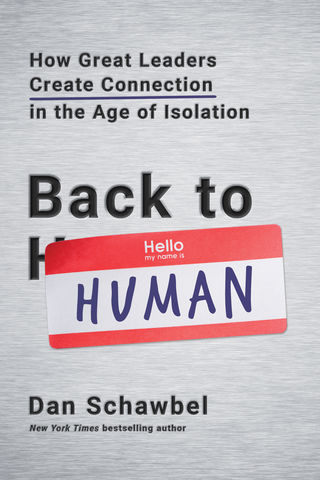Relationships
Back to Human: A Book Review
We all can benefit from building connections personally and professionally.
Posted November 13, 2018

Most of you are probably reading this review on your cell phone or tablet and are likely flipping back and forth between this website and your email. Maybe you’re receiving text messages from work, friends, or family, too. Most of us take pride in being able to master what we think of as “multi-tasking” among our many technologically advanced communication modes. We may assume that our ability to communicate at lightning speed and to connect with others around the globe through a palm-sized device make us all “great communicators.” Unfortunately, even if we’re able to have a global reach, we may be failing at the human touch.
Dan Schawbel, a New York Times bestselling author, argues for the importance of connecting to others to derail the increasingly pernicious sense of isolation that so many people now experience. In his new book, Back to Human: Howe Great Leaders Create Connection in the Age of Isolation, Schawbel does a thorough job of describing the ways in which isolation is fostered by technology; the ways in which isolation can be harmful to our health and emotional well-being; and expert ways to “show back up” in life that enhance your ability to connect with others and be a more active player in all the realms in which you function.
Most of us spend way too much time lost in technology—whether it’s time spent crafting emails, searching the web, texting about complicated or detailed processes, or “crushing candy”—and when we lose the ability to connect in real time, we are forfeiting a significant amount of the social capital that accumulates from real-time connections.
What’s Inside the Book?

Back to Human provides insider scoops on what successful contemporary leaders are doing to stay connected, self-assessments that help you understand ways in which you can improve your connections, and scenarios and sample dialogues that ring true to what today’s leaders should be doing to enhance connection and communication within their teams and beyond their organizations.
As a counselor, I recognize that the only person any of us can ever successfully change is ourselves. However, each change we make in ourselves has a ripple effect into our relationships among family, friends, co-workers, and the world. In this book, Schawbel acknowledges this by focusing on self-connections in the first section of this book. He helps us understand the ways in which we are getting in our own way as we strive for fulfillment, greater productivity, and self-growth. We all want to believe that we can reach any height to which we aspire, but we hit obstacles that we don’t expect to encounter. By helping his readers to focus on their own expectations and barriers, he inspires us to really reflect on who we are, what we want, and what we are doing to make progress or lose ground. The following sections help readers focus on the ways their actions (and inaction) influence their relationships with their team members and within the greater organization for which they work.
The Audience is Wide and the Message Far-Reaching
Although the book is geared for the type of connections that managers and workplace leaders build on the job, the message that Schawbel shares is applicable to a wide audience, regardless of their employment status. The author uses data from a large study, completed in partnership with Virgin Pulse, of managers and employees, to give evidence to the suggestions and guidance he shares. The inclusion of quotations and tips from well-known leaders in successful companies provides readers with the “street cred” that some self-help books lack. When Schawbel shares advice from these individuals, readers should really pay close attention—all of these leaders have once been where readers now are at in their jobs, so their advice comes from a place of firsthand knowledge and encouraging support. It seeks to address diversity in multiple ways and it provides good information to younger managers who lead teams that include older team members. Understanding that communication styles and perspectives differ across a wide variety of variables is key to growing one's leadership skills and Schawbel helps readers recognize many of the ways that diversity can be honored and embraced -- and the multiple ways in which it enhances a team.
Communication is something that all sentient creatures rely on to meet their survival needs. However, technology has moved human communication to means and experiences that the evolution of our brains has not been able to keep up with. This has created a world in which assumptions about our effectiveness can lead to significant problems between individuals. By helping us remember that communication is the glue that bonds us in relationships, group projects, and leadership tasks, and by providing a wealth of suggestions and guidance on ensuring our communications are as productive and effective as possible, this book is a great resource for both personal and professional growth. It’s written in a warm, informal tone that makes the concepts and content easy to receive and the multitude of real-life examples and stories should give the reader confidence that they can enrich their own lives through integrating the suggestions into their repertoire and communication toolset.
Getting “Back to Human” is an important goal and the book provides a blueprint for understanding ways that you can do just that.


